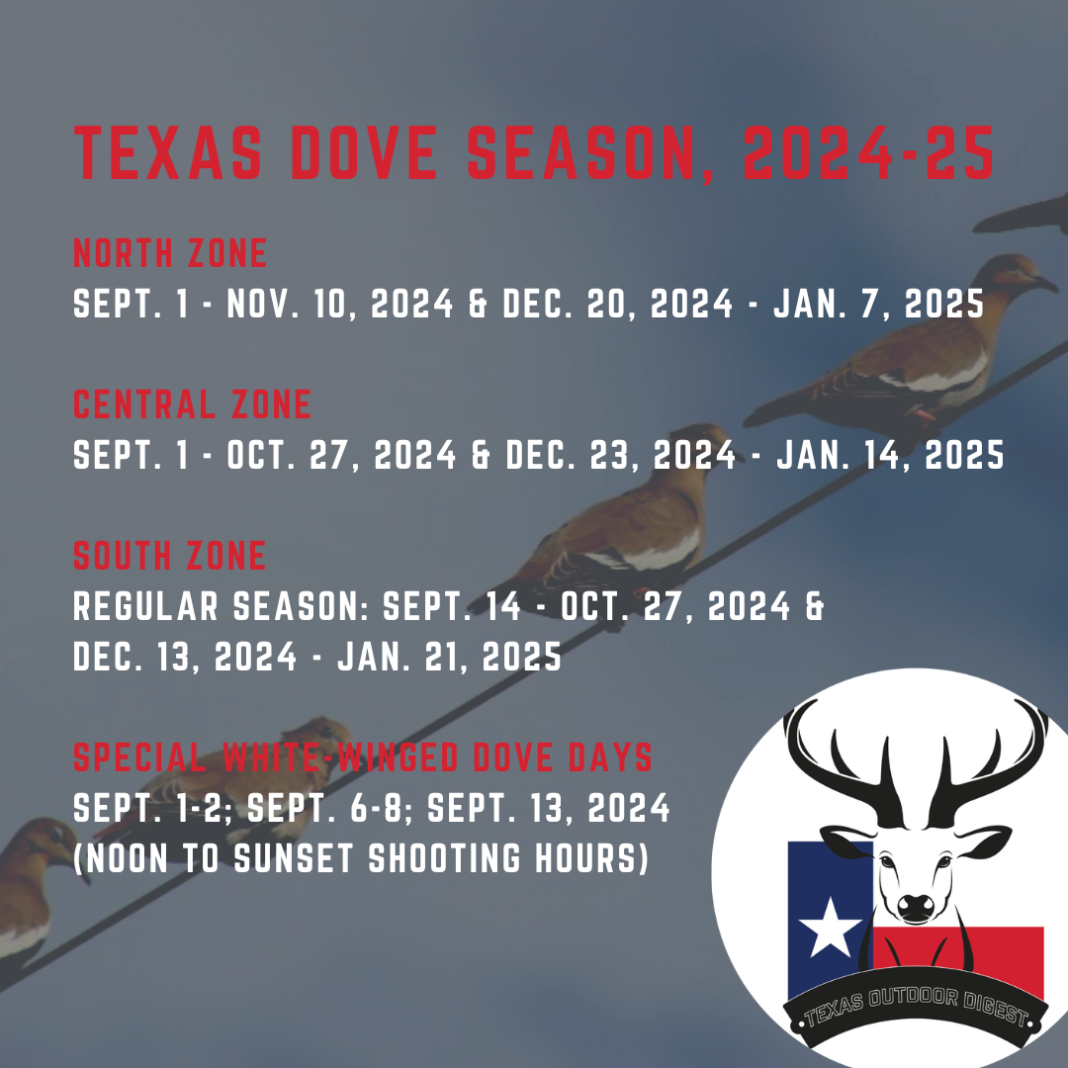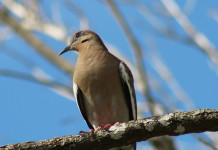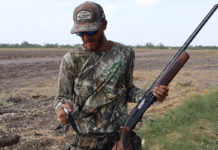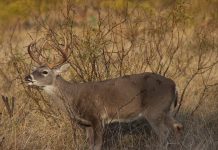Dove hunting is a grand pursuit in Texas for plenty of notable reasons. It kicks off the opening of fall hunting seasons across the state, it’s relatively inexpensive to bag a limit and it’s accommodating to hunters of all shapes, sizes, skillsets and ages.
Dove hunting also is big business in the Lone Star State, with hundreds of thousands of hunters putting hundreds of millions of dollars back into state and local economies. We Texans also are adept at bagging birds — bringing home the spoils on a steamy September sit to the tune of millions of mourning doves, whitewings and collared doves — most of them destined for the grill or smoker.
While there are plenty of great outfitters statewide offering all-inclusive and day hunts, there’s nothing wrong with putting in some time to find your own piece of dove paradise. That could mean finding a day lease, a public land hunting area or simply driving around ahead of the season to see if there are flight paths near where you live. You never know, if you’re polite and ask the right questions, you might just find the hunt of a lifetime on a private tract.
Outfitters know that preparation is key to ensuring a good dove hunt, with the focus namely being on scouting, including new locations they’re looking to lease for hunters. Scouting also should also be your focus, no matter if you’re hunting the same spot you have for decades or if you’re striking out into new territory.
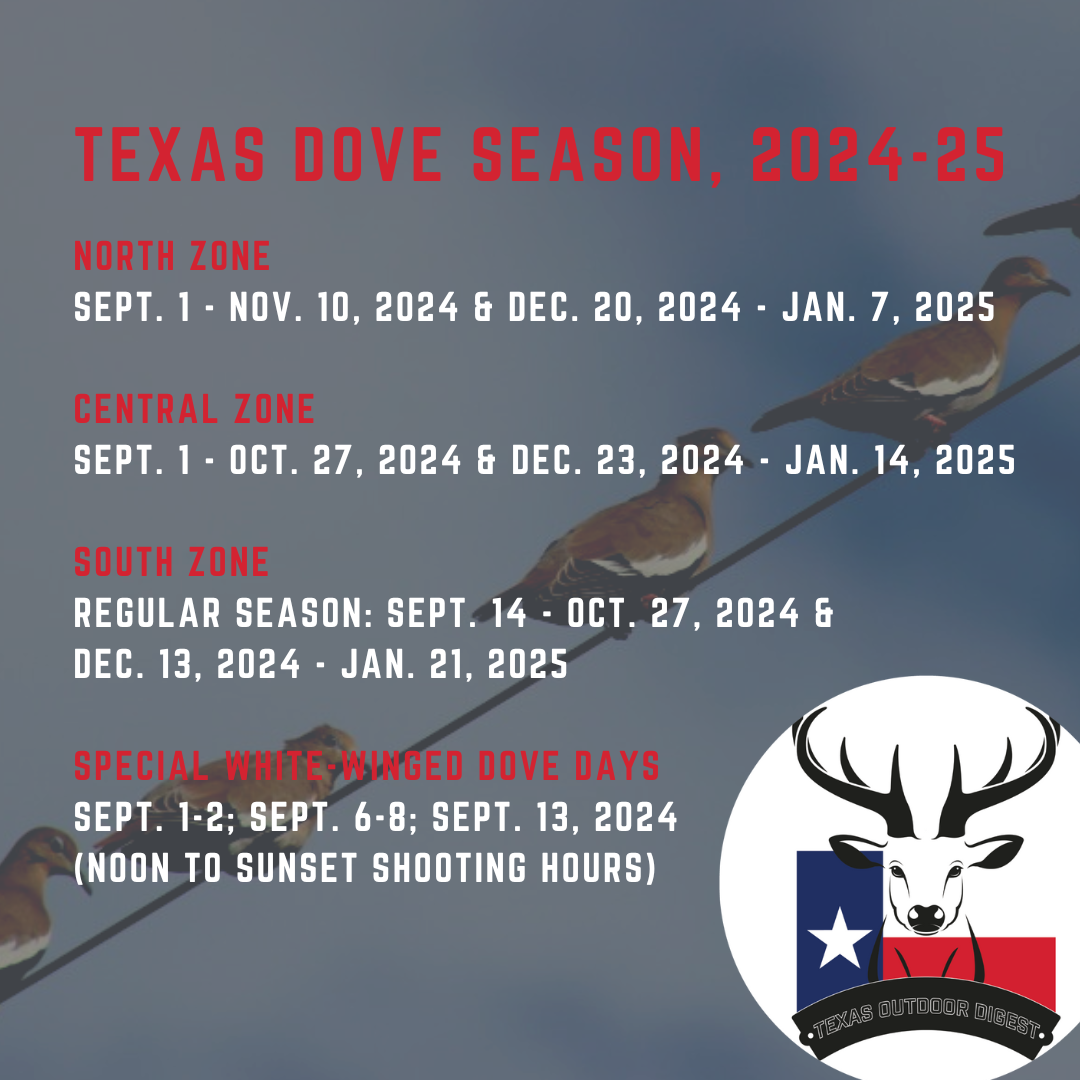
When it comes to dove hunting, the critters are simply creatures of habit, much like other game birds. If you know why birds may be attracted to a certain area and how they’ll fly in to get there, you can up the ante on ensuring you’ll bag a good number of birds – hopefully a limit if you’ve done your shotgun practice! – and make the most of your time afield.
With that in mind, here are things to search for when scouting and preparing for your upcoming dove hunting season:
Dove Hunting Scouting Tip No. 1: Find the Food
It sounds simple, but if you don’t have a food source, you won’t have doves of any kind. Doves love feasting on multiple types of grains and if you’ve got sunflowers, sorghum and other attractive food sources, you will have birds. That doesn’t mean they will simply stay in that area all season, but it does mean that early hunts should pay off in a big way.
Doves rarely will feed on the ground where heavy vegetation is present so it’s important to take note of that if you’re planting food plots or crop stands ahead of a season. If you’re hunting a smaller spread but are adjacent to a crop field, scout out any roost locations on your property or other areas of cover that could conceal hunters as birds fly past to get to the food.
Dove Hunting Scouting Tip No. 2: Find the Water
Perhaps even more important to game birds than food is water, specifically consistent hydration sources that are available throughout the season. Stock tanks and stock ponds litter the Texas landscape statewide and are among the best locations to target when hunting. If you’ve got windmills and are pumping water for livestock, you’ll be pumping water out for the doves, too.
While larger water sources such as lakes and reservoirs can keep loads of doves nearby, they also tend to scatter rather than concentrate the flight path. There are many landowners and outfitters that will pump water to flood low-lying croplands and other areas ahead of the September teal season, which also is a huge benefit for doves.
Dove Hunting Scouting Tip No. 3: Find the Trees
You don’t typically think of doves as being like turkeys in their habits, but one thing they share is that they will roost in large, often dead, trees. For some reason – likely that it allows them to stay higher off the ground without vegetation to look through, the deader the tree, the better roosting site for both species.
Doves, especially whitewings on the South Texas hunts I’ve been on, almost always would rather lay up in a big tree on the edge of a field and check the situation out before heading into a decoy spread or crop field. It can honestly be downright maddening when a big group of birds is headed straight for your position but then slows up to loaf into a big tree on the edge of a field.
While that can be frustrating, it also is a good sign you have the opportunity to have good flights of birds throughout the season. And if you’re thinking about cutting down a big, old, dead tree before September, wait until after dove season ends. You’d be doing your hunting efforts a disservice!
Dove Hunting Scouting Tip No. 4: Find the Flight Path
Doves do some crazy things, much like turkeys, but they often will enter a field or leave a field in a certain direction. That’s especially true if they’ve been shot at from a certain location in a dove field, which is why it’s good to switch up your hunting locations on a regular basis, if you can.
Perhaps you hunt the south end of your field one day and the north end the next or something along those lines, much like letting a deer stand rest from time to time so they don’t get a regular pattern on your encroachment. This is a perfect scouting aspect ahead of the season and you should spend mornings and evenings ahead of your hunting days just sitting in different areas to monitor how and where doves enter your locale.
Dove Hunting Scouting Tip No. 5: Find the Cover
Doves have excellent eyesight and use it to their advantage as their best defense from hunters. Early in the season, and especially with younger birds, the hunting is much easier than later on once they’ve been shot at and seen hunter movement as being a major threat to their health. As with finding a consistent flight path, scouting is vital to finding good places to conceal your presence.
The best dove hunting hiding spots feature some kind of natural vegetation that’s at least as tall as you are, with an opportunity to get in close to break up your silhouette and more easily conceal your movement. The best hunting spots are places with natural concealment that also are aided by throwing out shadows as the sun goes down.
Find these places and it can make your hunting much easier as birds are more likely to come in closer rather than if you were simply sitting on a chair out in the open.
Dove Hunting Scouting Tip No. 6: Find Some Space
If you’ve never hunted a location before, it’s optimal to find places that can accommodate numerous hunters while affording safe distances from one another and from shotgun pellets. In many regards, dove hunting is an escape from the daily grind and there aren’t many hunters I know who like having multiple other hunters close by — for any species — but when dove hunting a large field, it can actually be an advantage to have folks scattered around in different locations.
This can help large flights of birds from simply knowing that one spot in a field is safer than others and simply taking that route both in and out. The best dove hunts I’ve been on were in large crop fields with lots of hunters, which actually helped keep the birds moving because they couldn’t just perch in large trees on the edges of a field or have one entry and access point.
Dove hunting typically is easier in dry years although scouting is more important in times of drought. Survey figures in recent years have been promising and show that the end of the breeding season should have reasonably added to the population despite lingering drought, which should set the stage not just for this season but for those in the future. Wetter springs and summers typically make for better nesting and production numbers for doves ahead of the fall season, but the birds are hearty critters that can adapt to drought and survive much the way other wildlife does.
And while a little bit of moisture is beneficial to all wildlife throughout the state, rains right before a dove hunting season can make things somewhat tougher for hunters as birds get dispersed. The same also can be said for a cool front, though right now there doesn’t seem to be any real threat of scorching temperatures dropping.
Here’s to another great dove season and making memories in the great outdoors. One quick concluding note: if you haven’t stocked up on shotgun shells, you may have already missed the boat as ammo of all kinds has become much more competitive to find in the current pandemic climate. Don’t be the guy or gal scouting for ammo instead of scouting for birds!
Texas’ most dangerous game: Dove hunting causes most accidents
2024-25 Texas Dove Season
North Zone: Sept. 1 – Nov. 10, 2024 & Dec. 20 – Jan. 7, 2025
Central Zone: Sept. 1 – Oct. 27, 2024 & Dec. 23, 2024 – Jan. 14, 2025
Special White-winged Dove Days (entire South Zone): Sept. 1-2, 2024; and Sept. 6-8, 2024, and Sept. 13, 2024 (special regulations apply)
South Zone, Regular Season: Sept. 14 – Oct. 27, 2024; Dec. 13, 2024 – Jan. 21, 2025
The daily bag limit for doves statewide is 15 and the possession limit 45.
During the early days for the Special White-Winged Dove Season in the South Zone, hunting is allowed only from noon to sunset and the daily bag limit is 15 birds, to include not more than two mourning doves and two white-tipped doves. During the general season in the South Zone, the aggregate bag limit is 15 with no more than two white-tipped doves.

















